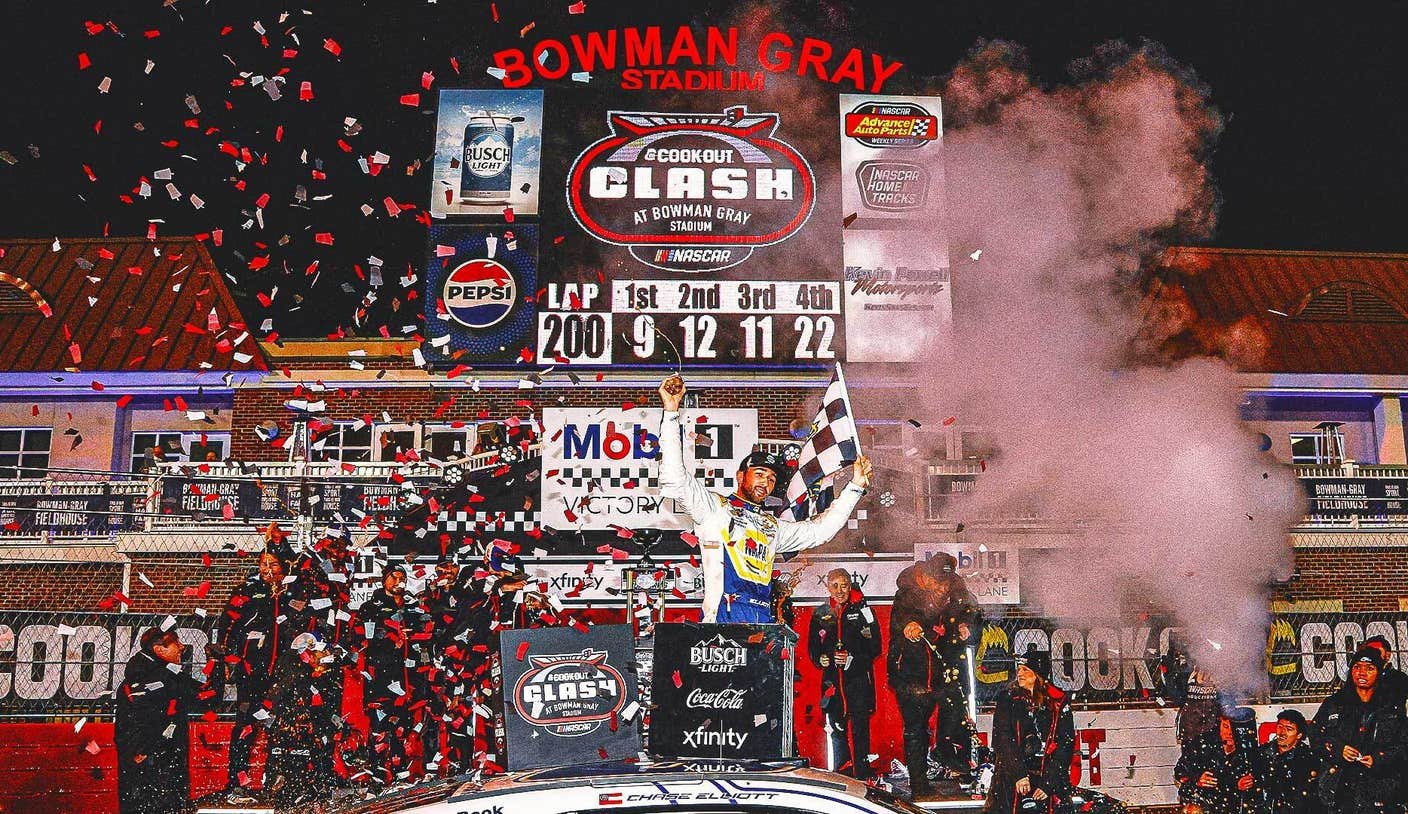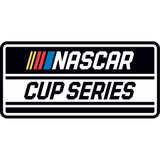
WINSTON-SALEM, N.C. — Chase Elliott exited his race-winning car to a delighted standing-room only crowd cheering wildly in Bowman Gray Stadium.
“I hope we didn’t disappoint,” Elliott said. “It was fun for me at least. We’ll hopefully come back here one day.”
This was the first Cup event weekend in 53 years at the football stadium that doubles as a storied racetrack. And it provided NASCAR a nice throwback to its roots for its annual preseason exhibition race. NASCAR’s previous experiment for the event, building a racetrack inside the Los Angeles Memorial Coliseum, had run its course after three years.
So NASCAR took the Clash to a track where Cup cars once raced and one that still enjoys a healthy spring and summer schedule of racing featuring NASCAR’s modified division. Known for its wild and raucous — and sometimes pugilistic — nights of racing, the track affectionately known as “The Madhouse” got a facelift from NASCAR. The league owns the promotional rights for racing at the publicly owned stadium.
About 40 percent of the 17,000 seats were sold to locals and the rest to fans who wanted to see Cup cars trying to navigate on what is essentially your standard quarter-mile running track. NASCAR had to add energy-absorbing walls, a new catchfence and new lights to meet its Cup standards. But the event certainly had that Saturday night racing feel, albeit on a Sunday night.
Fans stood up lap after lap, just as they would for other races at the track. Josh Berry advanced from the last-chance qualifier with a car that had to be repaired with specialized racing tape after all the damage it sustained in the event. The drivers showed tempers, although they didn’t overflow into any fisticuffs or need for bail money.
“I’m looking forward to hopefully coming back next year,” said Ryan Blaney, who started 23rd in the 23-car main event and finished second. “I don’t see why you wouldn’t come back.”
While both the LA Memorial Coliseum and Bowman Gray were both quarter-mile tracks, the Bowman Gray track was completely flat and also had some imperfections as far as the wall. In order to keep the authenticity of the track, the new steel-absorbing wall included areas that jutted into the upper groove in the turns, just as the old guardrail that had to be replaced to accommodate the Cup cars.
“I just feel like if we’re going to race on a football field, this is probably as good of a place as any to do it,” Elliott said as he sat in the postrace news conference, which is normally the weight room for Winston-Salem State University, where the stadium is located.
By going to an existing track rather than the temporary one in Los Angeles, the drivers could race on a worn surface instead of on a freshly paved one. When tracks are freshly paved, the racing typically isn’t quite as good.
“[The track] just seemed bigger to me,” Elliott said. “I don’t know what the technical distance would be, how different it is or not. The straightaways seemed a little longer, the corners weren’t so sharp, it didn’t seem like it was such a sharp apex.
“All of those things, that combined with the track surface having some age to it, probably had a pretty large impact on the race being better and kind of putting it a little more in your hands as far as tire management and all that stuff.”
Elliott had raced in a regional stock-car series at the track in 2011 and 2012, but he didn’t feel that helped him, as these heavy stock cars raced much differently than any other vehicle on the track.
Neither of the local track modified stars made the main event but certainly helped with the weekend vibe. Tim Brown, a 12-time track champion, was greeting fans at one of the area’s most famous hot dog joints the day before getting on the track.
Burt Myers, an 11-time champion, got wrecked out of the last-chance qualifier and still couldn’t help but smile after exiting the care center.
“The lights, the walls, the whole facility, the infield, everything the way it looks, it brought it to a Cup level,” Myers said.
“To see them do that to my little home track here in Winston-Salem was heartwarming on my end.”
Myers is used to racing in front of solid crowds at the track during the summer. For the Cup drivers, a crowd of close to 20,000 will likely be the smallest of the season.
So does NASCAR do this somewhere else and potentially help another facility? It potentially could have agreements where, instead of the track pocketing the money that it would get from the television contract for the event, NASCAR spends that money on upgrades.
There has also been consideration of making this race an international event.
And, especially after a successful (albeit a little cold) race Sunday night, there will be increased chatter about making a return to Bowman Gray.
“There’s going to be just as many people here next year as there was tonight,” Blaney said. “I don’t think it would lose any of its luster.”
Joey Logano, who finished fourth, could see both arguments for wanting to return next year versus going somewhere else. At least in the short term.
“It looks good, the energy is real,” Logano said. “It’s not like you have this ginormous stadium and you get half or three quarters of it full. It’s standing room only, it’s a special feel, it’s hard to get the ticket.
“People want what they can’t have, right? In the same breath, I would say it’s very important for us to move things around. We seen the success of our sport moving to new racetracks. I’m a big fan of going to new race tracks.”
Elliott stressed the importance, though, of going to facilities where every fan seems to be into it.
“Probably the biggest lesson I’ve taken from the weekend is kind of reaffirming my belief in less is more,” Elliott said. “Like this crowd. It wasn’t 80,000, 90,000, but it was a smaller number. A more intimate number.”
When Elliott wins a race, though, the crowd seems bigger since he is the sport’s most popular driver. Blaney even joked a little that there was only one way for him to pass Elliott for the win, and he didn’t dare do it.
“I’m not going to bulldog into him and get chased out of here with pitchforks,” Blaney said.
Drivers rarely show restraint at Bowman Gray. The fans come to see drivers occasionally dump another. The race Sunday attracted fans from 44 states and five countries.
Even without seeing a driver wreck another for the win, these fans most likely will want to come back. The only question is when.
“They took a facility here that’s been around for a long time and made it feel like a brand new one,” said veteran driver and team co-owner Denny Hamlin. “The fans obviously were very, very excited to see us. They were enthusiastic. We feed into that. It felt like a big event even though it’s not a points-paying event or anything like that.
“You want to go wherever can give you that feel and atmosphere. There’s surely bigger venues and bigger cities to go to, but will you have this type of feel or not? That’s really what matters.”
Bob Pockrass covers NASCAR for FOX Sports. He has spent decades covering motorsports, including over 30 Daytona 500s, with stints at ESPN, Sporting News, NASCAR Scene magazine and The (Daytona Beach) News-Journal. Follow him on Twitter @bobpockrass.

Get more from NASCAR Cup Series Follow your favorites to get information about games, news and more


